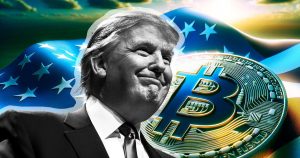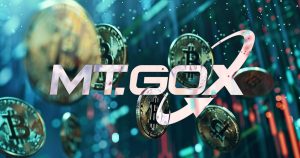Damien Hirst Utilizes Chainlink for Real-Time Art Pricing: A Revolutionary Approach

Renowned artist Damien Hirst has taken a groundbreaking step by integrating Chainlink’s oracle technology into his art sales, enabling real-time pricing updates based on market conditions. This innovative approach merges the worlds of art and decentralized finance (DeFi), illustrating a new method for artists to interact with the digital economy.
Overview of Damien Hirst’s Integration of Chainlink
Chainlink’s Role in Art Pricing
Chainlink, a leading provider of secure and reliable oracles for blockchain smart contracts, now plays a crucial role in Hirst’s art projects. By using Chainlink, Hirst can automatically adjust the prices of his artworks in real-time, responding dynamically to changes in various economic indicators and market data.
Benefits for Art Sales
This system allows potential buyers to purchase art at prices that are continuously updated, reflecting current market trends. It provides a transparent pricing mechanism that can adapt to the volatile nature of both the art and cryptocurrency markets.
Impact on the Art and Blockchain Industries
Revolutionizing Art Valuation
Damien Hirst’s use of Chainlink oracles for real-time art pricing could revolutionize how art is valued and sold. By linking art prices to live market data, Hirst not only ensures fairness and transparency but also introduces a fluid pricing model that could attract a broader audience to the art market.
Strengthening Blockchain Use Cases
The application of Chainlink in this context also strengthens the case for blockchain technologies in various sectors. It demonstrates the versatility of oracles beyond traditional DeFi applications, potentially encouraging other sectors to explore similar integrations.
Challenges and Opportunities
Technical and Operational Challenges
Implementing a real-time pricing model based on blockchain technology poses technical challenges, including ensuring the reliability of data sources and the scalability of the solution. Damien Hirst and his team must continuously refine the system to handle these complexities effectively.
Market Response and Adaptation
The market’s response to this novel pricing strategy will also determine its success. While some collectors may appreciate the transparency and dynamic nature of this approach, others might prefer more traditional methods of art valuation and purchasing.
Future Outlook
Potential for Wider Adoption
If successful, Damien Hirst’s initiative could set a precedent for other artists and galleries to adopt similar technologies, leading to wider use of blockchain for dynamic pricing in the art world.
Implications for Digital and Physical Art Markets
This integration might also blur the lines between digital and physical art markets, creating new opportunities for artists to engage with digital assets and cryptocurrencies.
Damien Hirst’s pioneering use of Chainlink for real-time art pricing is a significant innovation at the intersection of art and technology. It not only enhances the process of buying and selling art but also challenges traditional practices, offering a glimpse into the future of art market transactions.
FAQs
- What is Chainlink?
- Chainlink is a decentralized oracle network that provides reliable, tamper-proof data for complex smart contracts on any blockchain.
- How does real-time pricing benefit art buyers?
- It ensures that buyers pay a price that reflects the most current market conditions, potentially making art purchases more transparent and fair.
- Could this technology be used beyond the art world?
- Yes, the technology has potential applications in any sector where dynamic pricing based on real-time data could be beneficial.
- What are the risks of using blockchain technology in art pricing?
- Risks include the dependency on the accuracy and security of the data sources and potential technical failures that could affect pricing.
- How might this change the way art is sold in the future?
- This could lead to more dynamic and market-responsive pricing models, potentially making the art market more accessible and integrated with the digital economy.





